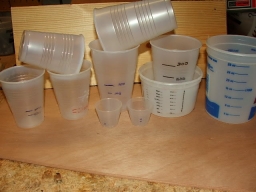These are fiberglass boats Total Page Hits: 1223
Post Type: Technical/Project
Boat Part: Not Specified
Date Modified: 02/11/2018 2:32 PM
Shared June 5, 2009 by Howard Audsley.
First of all, these are fiberglass boats. Fiberglass in the form of glass cloth, held together by polyester resin. The white skin you see is gelcoat, which in it’s liquid form looks and smells and is put together exactly like polyester resin. Same hardener and everything. Virtually all fiberglass boats were and continue to be made by these products. Since this old girl is almost 30 years old and still going strong, we’d have to conclude the method works. Having said that, polyester resin has it’s problems in terms of making repairs. It’s pretty iffy as an adhesive.
There is a better way. Epoxy resins. A better adhesive and much stronger in all aspects. If you are going to be making repairs epoxy should be your first choice. There are a variety of products out there, but I’ll save you the effort of trying to sort them out. Buy a gallon of epoxy resin and a quart each of fast and slow hardener from Raka. Along with that, some cabosil and wood flour as thickeners and some micro balloons for fairing compound and you are all set. You can also get your glass products from RAKA. Defender Industries has a number of different products to try. I have glass from both.
http://www.raka.com/
http://www.defender.com/
The reason I like RAKA, aside from price, which is close to half of what West Marine charges for the West System products, is they mix in a 2:1 ratio. No pumps, you measure what you need. In my view, a much better way to do it. As for strength, I’ve tested it a number of times with wood and the wood always breaks before the glue joint gives out. I’ve built a 10 plywood dinghy with the stuff. It works!
Working with epoxy is a learn as you go process, and with a few simple rules to follow, it seldom screws up.
What are the rules?
Mix in the proper ratio. 2:1 is really easy to measure by volume.
Watch your temps. Match your hardener to the temp and job. Not too fast, or two slow.
Mix it well.
Don’t over clamp it. It actually needs a bit of gap to gain full strength.
Beyond that, not much to worry about. There are a wide range of things you can fix with epoxy resin, glass and wood and almost nothing that can’t be undone if you screw it up.
Basic tools of the trade:
Mixing cups for all occasions. From 7.5 ml all the way up to half a gallon. Try that with a pump!

